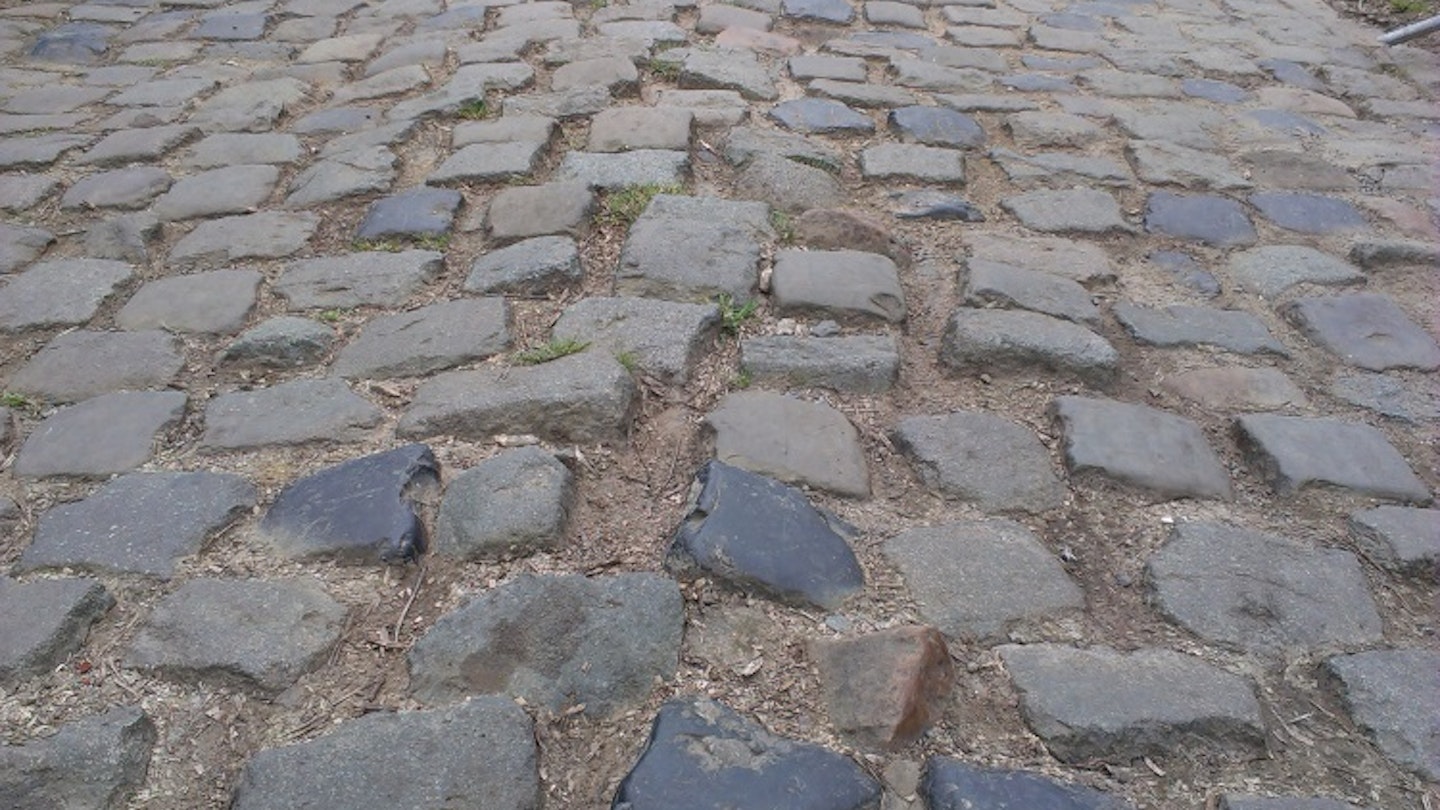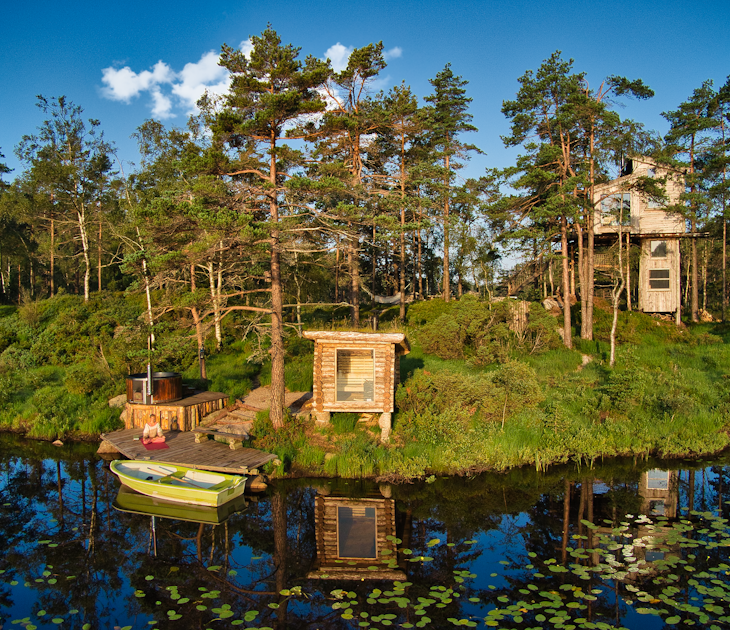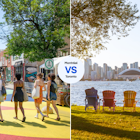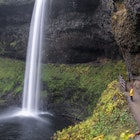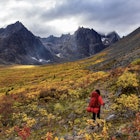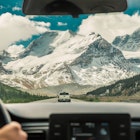I was on a hill in Belgium – a country not famous for undulating terrain – at the side of a narrow road. In front of me, some of the world’s best professional cyclists pounded past at astonishing speed. Behind me, a huge crowd of cycling fans roared encouragement.
This was Flanders, the northern region of Belgium, and this was the Tour of Flanders, or Ronde van Vlaanderen, renowned as one of the toughest single-day bike races in the international calendar. With a distance of over 250km to cover it’s hard enough, but it’s made even harder by the inclusion of several steep hills, many paved with ancient cobbles, worn and crooked with the passage of time.
It’s a terrible surface to cycle across. Wheels can snap on the jagged edges, while shock waves make wildly vibrating handlebars almost impossible to hold. And we’re talking road bikes here. None of your wimpy fat tyres and suspension. But that’s the point. The Tour of Flanders is long, tough and utterly brutal. The winner is assured a place in cycling’s hall of fame. And that’s why the fans turn out in their thousands.
Treacherous cobblestone race surface, Flanders. Image by David Else/Lonely Planet.
National sport
In Flanders cycling is the national sport, like football in Brazil, hockey in Canada or cricket in the Caribbean. For the locals, lining the roadside to cheer their cycling heroes is as much a statement of cultural identity as it is a sporting occasion.
And alongside the vast numbers of Flandriens, many visitors come from across Europe and beyond to experience this ‘monument’ (as cycling’s five greatest single-day races are called). Even if you’re not a cycling aficionado it’s hard to avoid getting caught up in the fervour and excitement.
Cobblestones inscribed with race winners' names, Flanders museum. Image by David Else/Lonely Planet.
Close encounters
The hill where I was standing is called Oud Kwaremont. It’s steep and narrow, with twisting bends, and some really evil-looking cobbles. The 2014 race came up the hill three times, so many spectators arrived early to ensure a good vantage spot.
To pass time, the main activities seemed to be eating and drinking. Then, well fuelled on frites and Duval beer, the spectators became fanatics as the race came past. They screamed and shouted, sometimes literally into the faces of the riders.
There are very few sports where the fans can get so close to their heroes. At one point I had to move back as Fabian Cancellara, eventual winner of the 2014 race, tore past with no room to spare. I could see the lines of sweat tracking through the dust on his face.
Tour of Flanders pro race. Image by David Else/Lonely Planet
Taking part
Cycling in Flanders is not all about watching. As befitting the heartland of cycling, you can take part as well. Options include the Tour of Flanders Cyclo-sportive (www.sport.be/rondevanvlaanderen/2014/eng/), a chance for amateurs to ride the same roads – and encounter the same cobbles – as the professionals.
In recent years, well over 10,000 people have taken part in this event, ranging from eager sportivistes covering the full 250km distance to fun-riders taking the relaxed 50km option. There’s a 160km mid-way choice as well. In 2014, the Cyclo’ was the day before the real race, so enthusiasts could ride the route on Saturday and then on Sunday see how it should be done.
Participants in the Flanders Cyclo race. Image by David Else/Lonely Planet
Easy rider
If bone-crunching cobbles don’t grab you, Flanders is also a perfect destination for leisurely cycle touring. You can join the locals and tootle through historic city streets or follow dedicated cycle-paths through the flatlands alongside picturesque canals. For something a little more active, you can explore the rolling landscape billed by the local tourist board as the Flemish Ardennes (not to be confused with the more rugged ‘real’ Ardennes to the southeast), a delightful area of fields, farms and little villages, punctuated by windmills.
Good starting points include the well-known centres of Bruges or Ghent, but perhaps the best spot is the smaller city of Oudenaarde. There’s a good choice of places to stay, with sights including the 13th-century cathedral, St-Walburgakerk, the historic market square, and the outrageously decorative turrets of the Stadhuis (town hall).
There’s also the Centrum Ronde van Vlaanderen (CRVV) – yes, the Tour of Flanders Centre – with an information desk, a cyclists’ cafe, and possibly the only museum in the world dedicated to a single bike race. Oudenaarde’s compact size means the surrounding countryside is just a short ride away. The Flemish Ardennes boasts over 800km of cycle routes, with several starting at the CRVV where you can get local maps and guidebooks.
Boat cruise down the canal in Ghent. Image by Richard Taylor/CC BY 2.0
Getting around
Keen cyclists visiting Flanders will probably bring their own bike, but you can hire locally; CRVV keeps a list (www.crvv.be/en/319-bike-rental-and-repair). And if you want to tap local expertise, you can arrange a guided tour; local companies include Flanders On Bike (www.flandersonbike.com).
Another option is UK company Wheel2Wheel (www.wheel2wheelholidays.com), which offers self-guided cycling holidays in Flanders and across Belgium, where you’re provided with accommodation, baggage transport and a detailed route. All you need to do is enjoy the ride. Tours include Brussels to Bruges via Ghent, and visits to WW1 battle sites (the infamous ‘Flanders Fields’) – especially significant in 2014, the centenary of the Great War itself.
In the wheeltracks of heroes: other great races
The Flanders Cyclos is just one of many mass-participation cycling events around the world. Usually called sportives, gran fondos or etapes, other events include:
- Europe L’Etape du Tour, France is a popular choice for sporting cyclists: it follows the route of a Tour de France stage, usually including high cols (mountain passes) in the Alps or Pyrenees (www.letapedutour.com). The Gran Fondo Milano–Sanremo in Italy is another ‘monument’ taster (http://milano-sanremo.org).
- Africa Cape Argus, held in South Africa, is the world’s largest timed bike competition, with 35,000 participants, covering a distance of 95km (www.cycletour.co.za). A longer option at nearly 12,000km, is the pan-continental Tour d’Afrique (www.tdaglobalcycling.com).
- Americas In the USA the Tour of the Battenkill is a notoriously tough race on tar and dirt roads for professionals and serious amateurs, with a mass-participation gran fondo for everyone else (www.tourofthebattenkill.com).
- Asia-Pacific Sportives are relatively thin on the ground in Asia, but events to consider include Japan’s Tour de Okinawa (http://tour-de-okinawa.jp) or the OCBC Cycle in Singapore (www.ocbc.cyclesingapore.com.sg). Australia has a more established scene with events including Melbourne’s Around the Bay (www.bicyclenetwork.com.au/bupa-around-the-bay).
All inclusive tours to many of these events can be organised through Sports Tours International (www.sportstoursinternational.co.uk/cycling).
David Else is a freelance writer covering travel, cycling and outdoor activities.
